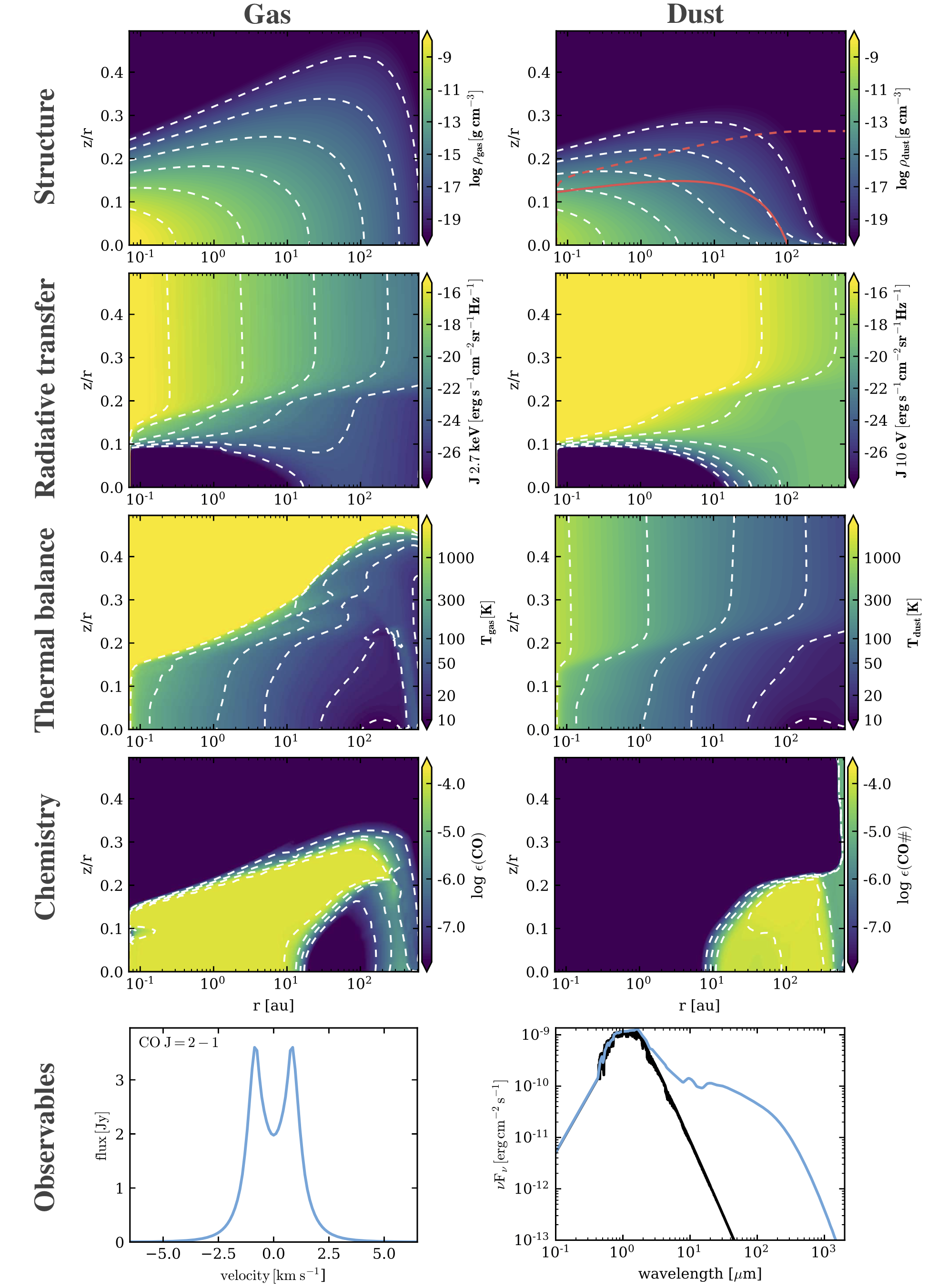ProDiMo is a so-called radiation thermo-chemical disk modeling code. Assuming an axi-symmetric two-dimensional dust and gas density structure, ProDiMo calculates the internal wavelength-dependent radiation field, the dust temperature structure, the gas in thermal balance, and the chemical abundances. The two figures below show a typical output of ProDiMo and the flow chart of the code.
Flow Chart

Example Output

ProDiMo provides many options to select different physical and chemical approximations:
- Passive disks heated by the star -- or self-luminous active disks heated by viscosity
- Large range of options to setup the disk density structure:
- multi-zone
- from hydro simulations
- disk + envelope
- hydrostatic vertical structure
- Large collection of optical data for dust opacities:
- adjustable size distribution
- hollow sphere opacities
- position-dependent ice opacities consistent with ice-chemistry
- Dust settling:
- various prescriptions based on about 100 size bins
- various prescriptions based on about 100 size bins
- Options for PAHs:
- adjustable size
- charging states in chemistry,
- opacities in continuum radiative transfer
- detailed computation for heating/cooling via cross sections
- Well-tested ray-based continuum radiative transfer
- benchmarked against MCFOST and MCMax
- MCMax and MCFOST can be used to replace the ProDiMo rdiative transfer
- options to include EUV and X-ray wavelengths
- Large range of central objects:
- Brown Dwarfs
- low-mass, high-mass stars
- AGNs
- Adjustable environment:
- UV background
- infrared background
- cosmic rays and X-ray background
- inclusion of stellar energetic particles (SEPs)
- Large range of line transitions:
- by default, ProDiMo includes about 10000 lines for heating/cooling, can be increased
- from UV to radio wavelengths
- atoms, ions, and molecules
- LTE and non-LTE
- by default, ProDiMo includes about 10000 lines for heating/cooling, can be increased
- Generate images for instrument simulators:
- continuum dust + PAH images
- line fluxes, velocity profiles, and channel maps
- output fits-files for ALMA-CASA
- generate visibilities (both continuum and line)
- continuum dust + PAH images
- Flexible chemistry:
- UMIST
- KIDA
- STAND_2020
- private networks
- surface chemistry
- steady-state or time-dependent chemistry
- size-dependent grain charging
Here you find a list of papers that describe certain code features in detail. For plotting and analyzing the model results comprehensive tools are available in IDL (included in the code distribution) or pyhton (prodimopy). For more examples take a look at the ProDiMo Publications
